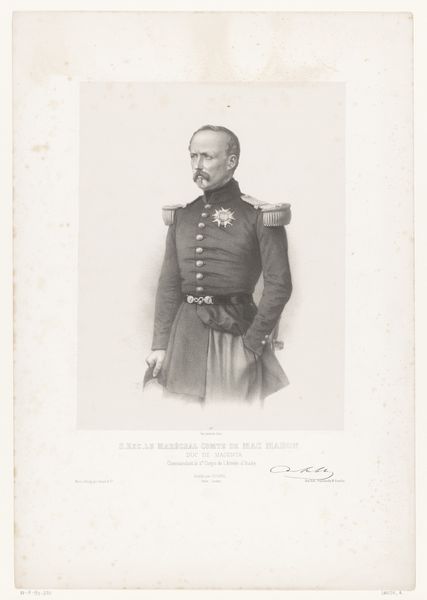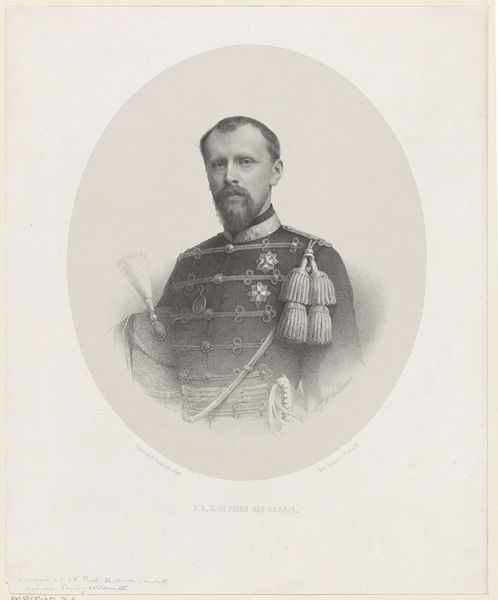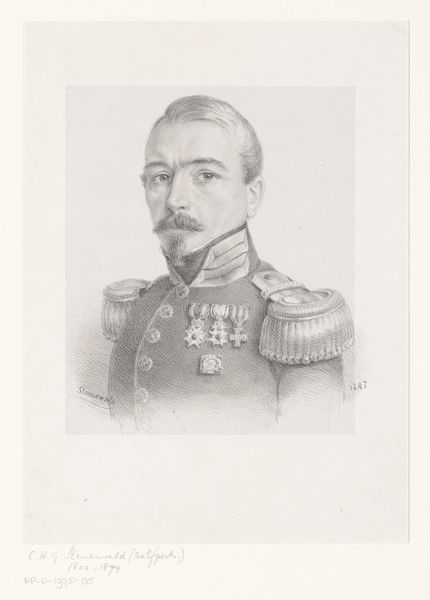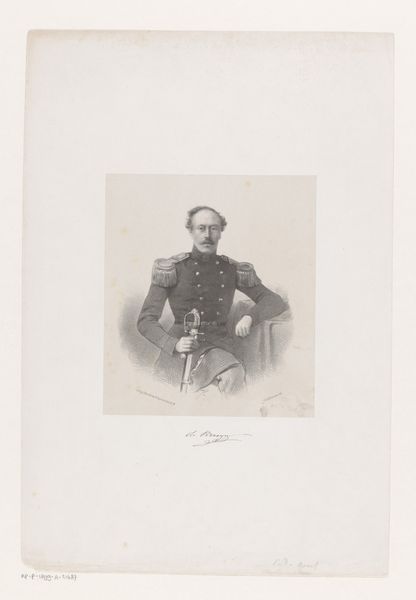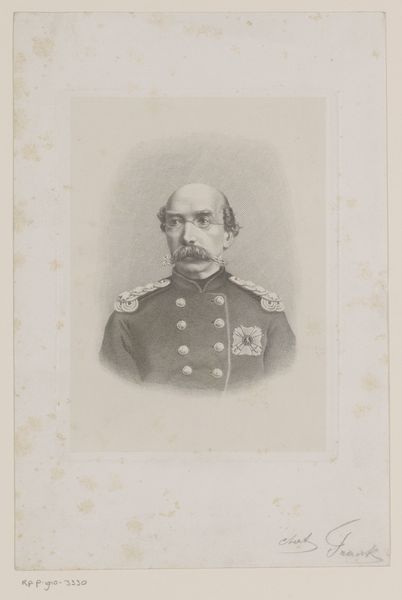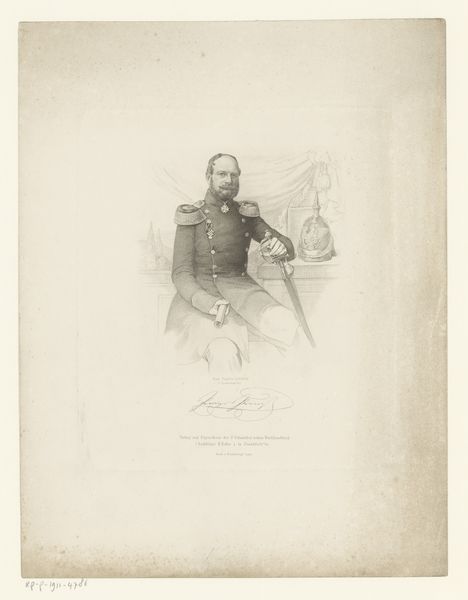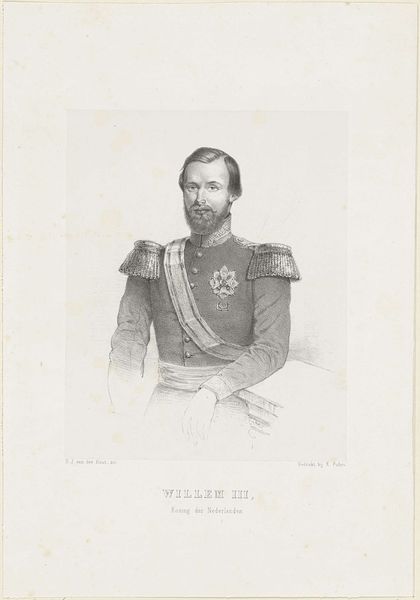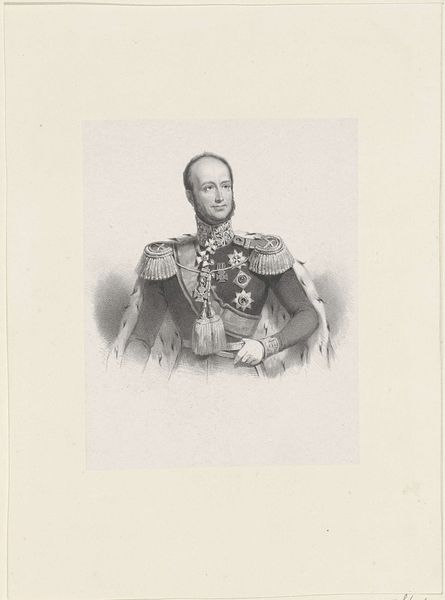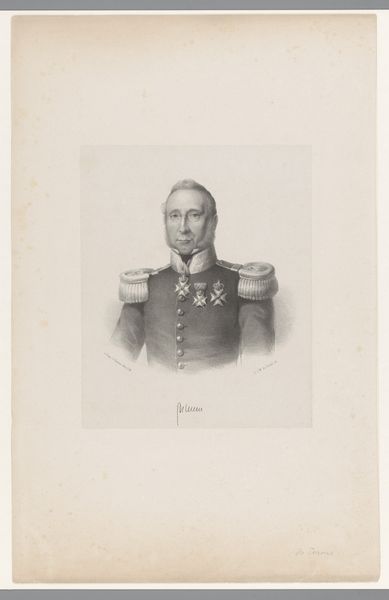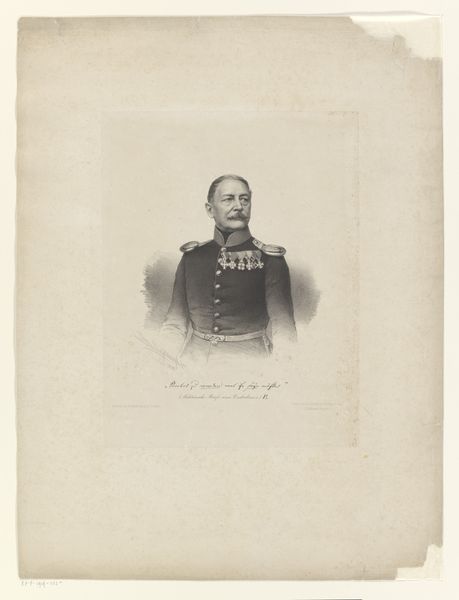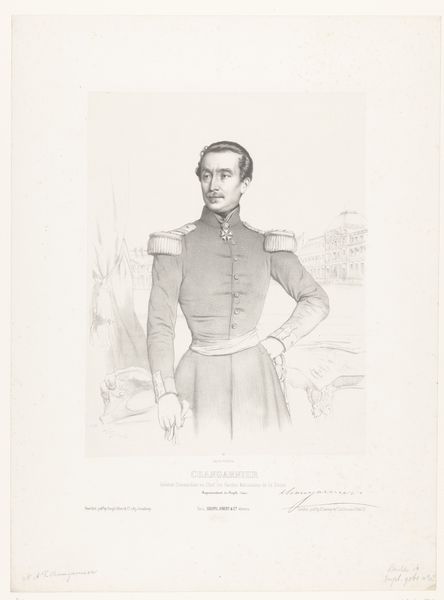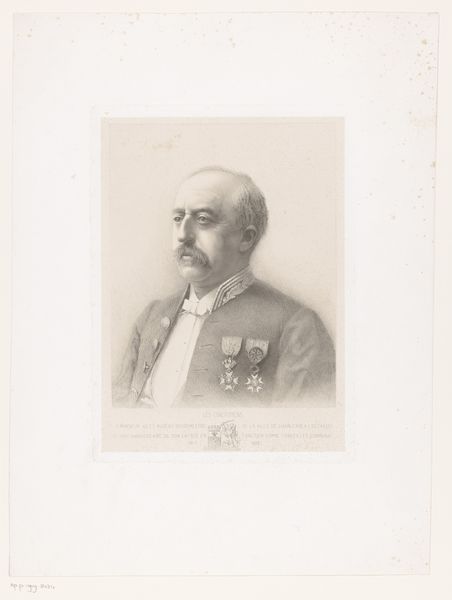
drawing, pencil
#
portrait
#
drawing
#
light pencil work
#
pencil drawing
#
pencil
#
portrait drawing
#
genre-painting
#
realism
Dimensions: height 525 mm, width 372 mm
Copyright: Rijks Museum: Open Domain
This lithograph of an unknown officer was created by Willem Bernardus IJzerdraat, likely in the mid-19th century. Lithography is a printmaking technique that relies on the chemical repulsion between oil and water. The artist would have drawn the portrait on a flat stone surface using a greasy crayon, then treated the stone with acid. The stone would be wet, and then greasy ink applied; it sticks only to the drawing. From there, many identical prints could be pulled. This process democratized image production, making portraits like this one accessible to a broader public than painted portraits. Consider the social implications of this technology. As a relatively affordable means of image production, lithography enabled a wider segment of the population to participate in visual culture, both as consumers and producers. It’s a reminder that artistic media are never neutral; they carry within them the potential for social change.
Comments
No comments
Be the first to comment and join the conversation on the ultimate creative platform.
